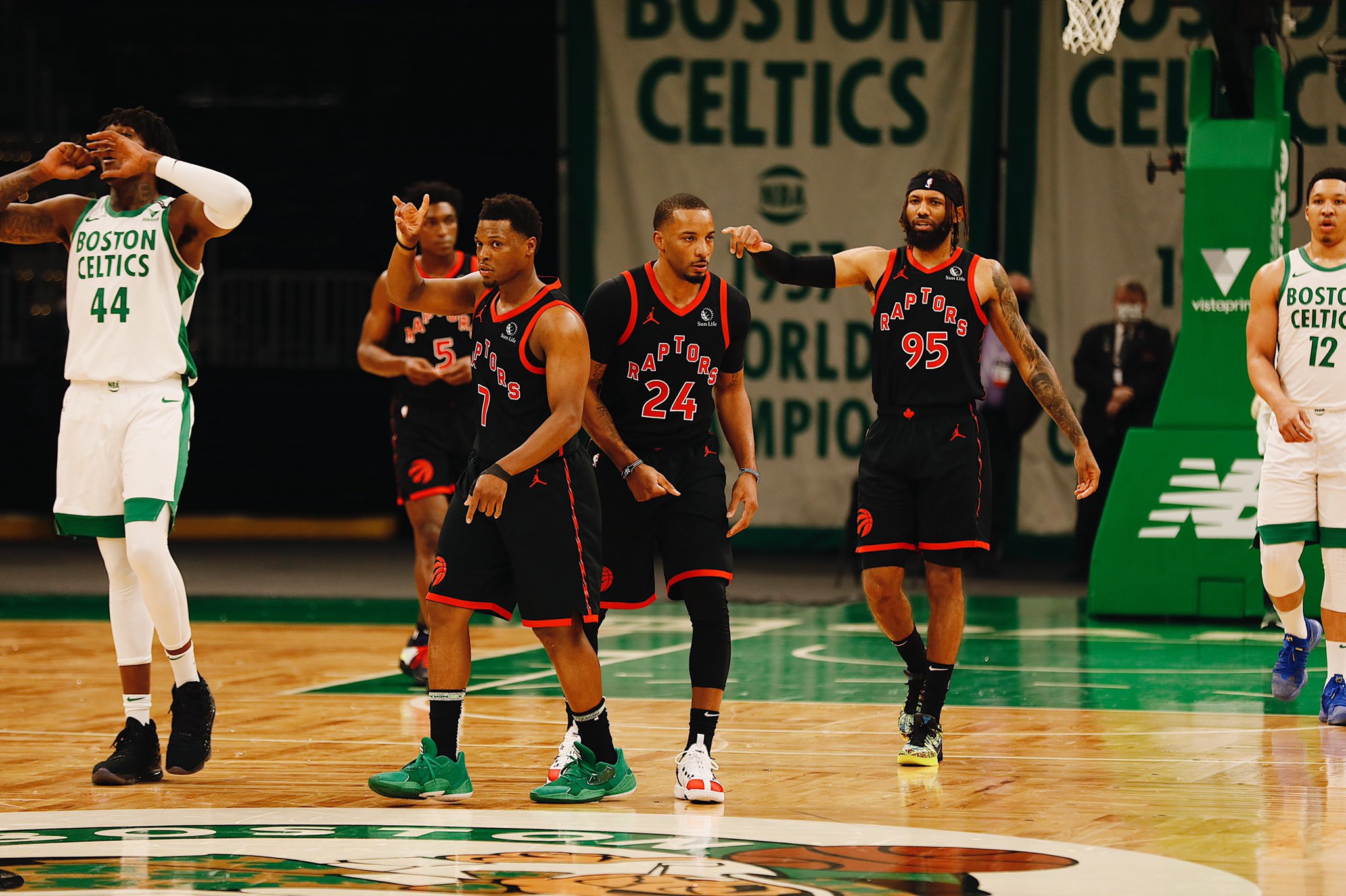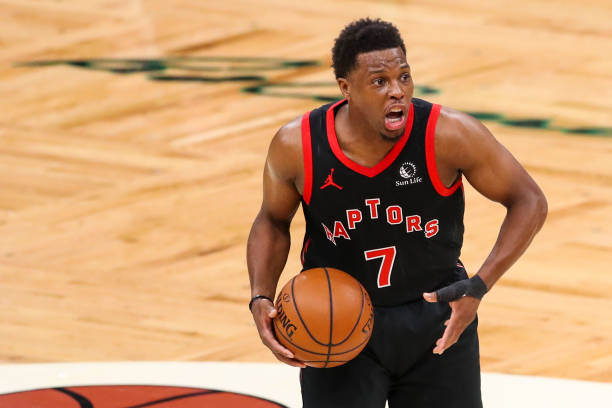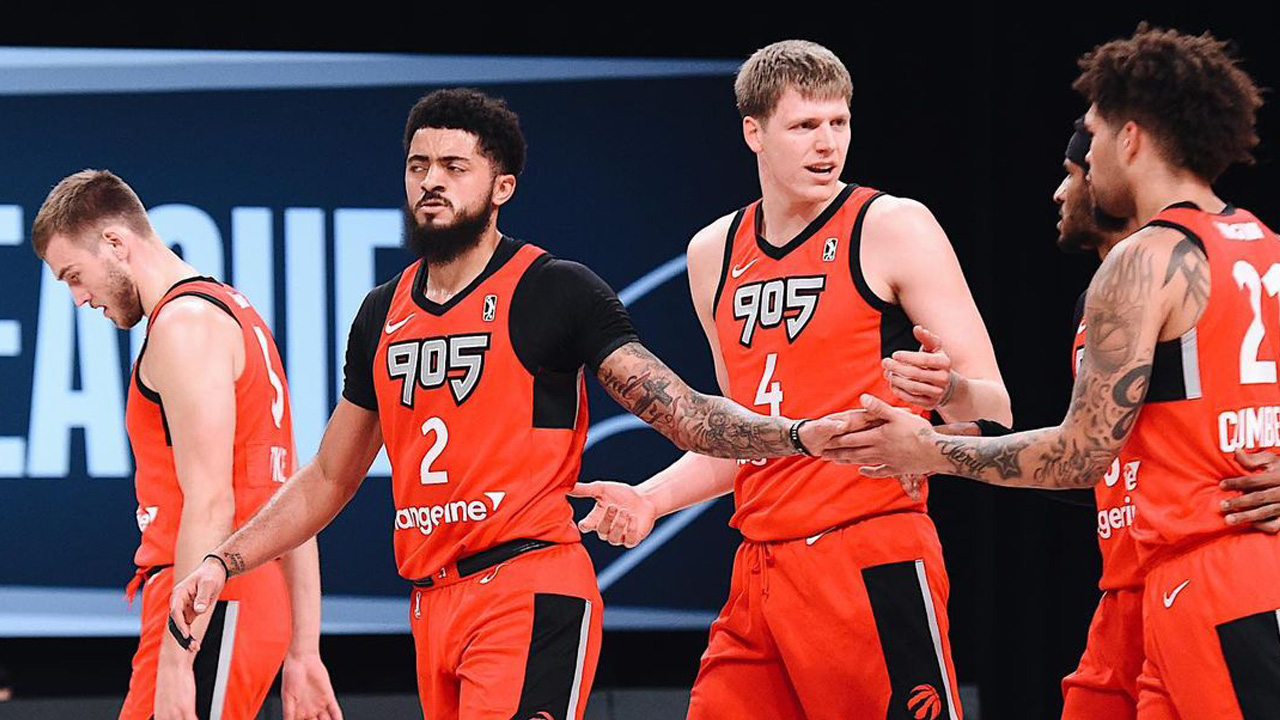It’s important to break things into their disparate elements. Water: hydrogen, hydrogen again, and oxygen. Pandemic: loneliness, boredom, anxiety, etc. Basketball: shooting, dribbling, passing, etc.
Which brings us to the first half of the Toronto Raptors’ season. Their 17-19, eighth-place-in-the-East, season.
There are a variety of disparate elements that have gone into Toronto’s season. Were you to break it down into phases, you would have some pretty clear sections. At first, the Raptors were not great. In fact, on January 11, they were tied for the worst record in the NBA at 2-8. There were certainly a variety of causes. Causes and effects. Most significantly, amidst the move to Tampa and the ongoing pandemic, the Raptors were struggling off the court. There were clear effects: for one, the Raptors were failing to score at a record rate out of drives. Also, the team could not stop hacking opponents.
Around that same time, of course, the team was starting to turn it around. The Raptors lost two consecutive games by a single point each as Pascal Siakam’s spinning game-winning attempts spilled out. That’s, uh, pretty weird. But it showed that even as Toronto was losing, they were getting better. They went on a three-game losing streak before only days later beginning a three-game losing streak. It was choppy. Toronto was playing better but couldn’t stay out of their own way. Luck, too, had a part to play. It was clear, though, that they were significant better than the below-.500 team they seemed to be at the beginning of the season.
All of that brewing success finally resulted in a breakthrough. Over the next month-plus, the Raptors blitzed to a 14-8 record with the fifth-best net rating in the league. They were finally flexing their muscles as a premier team, as they have been for almost a decade.
Their small-ball lineup drove the team’s winning ways. Norman Powell returned to his status as one of the league’s most efficient scorers. DeAndre’ Bembry broke into the rotation, offering flexibility, defense, and passing; it’s likely that he’ll be a significant player no matter what going forward this season. It seemed that everything was better. Though OG Anunoby was out for an extended period with a calf injury, the team devoured opponents with him in the lineup. Toronto finally improved to a game over .500 on February 21.
And yet they fumbled towards the half-way line. Over the following five games — five difficult games! — the Raptors went 1-4. Of course, Toronto suffered a cavalcade of losses to the health and safety program, including Nick Nurse, Fred VanVleet, Pascal Siakam, Anunoby, and multiple other players and coaches. The midway break could not have come at a cleaner point. The Raptors were hurting, and inasmuch as they are forced to continue with the season, and likely want to continue with the season, this helps. Of course, the health of the people involved is far more important than the importance of the time off for basketball reasons.
If we’re being optimistic, there are innumerable causes for hope that the Raptors will remain a threat come playoff time this season. For one, VanVleet has leveled up this season. I wrote on February 1 that he has been Toronto’s best player, and that has been even more true since then. FiveThirtyEight’s one-number compilation metric lists VanVleet as the fourth-best player this season, behind only MVP leaders Nikola Jokic, Joel Embiid, and LeBron James. More coming on him from me in the days to follow. Pascal Siakam has bounced back after a slow start to the year, and his post play and passing game have never been better. Kyle Lowry remains a point god. OG Anunoby has emerged as a borderline star, at least in terms of impact. Chris Boucher has exploded into an incredible role off the bench.
And yet, and yet, the Raptors sit at 17-19. How’s that possible behind the exceptional play of VanVleet and Anunoby in particular? Well, it’s not like there haven’t been problems. Between Aron Baynes and the exiled Alex Len, the Raptors have had little from the center position. In fact, according to one catch-all metric from FiveThirtyEight, Baynes has been the sixth-least effective center in the NBA. One might argue that Boucher has been a center, but the Raptors have actually broken even in the minutes that Boucher has played without one of Anunoby or Baynes alongside him, while scoring at least 14.0 points per 100 possessions (98th percentile) more than opponents with Boucher alongside one of the others; the point is clear that Boucher is at his most effective when not playing center and instead able to chase blocks when rotating to the perimeter and protect the rim from the weak side and allow others to wrestle for rebounds.
Beyond the struggle at the center spot, Toronto has had few consistent contributors in the rotation. Beyond the top seven of VanVleet, Lowry, Powell, Anunoby, Siakam, Boucher, and Bembry, the Raptors have lacked any positives. That is livable in the playoffs, but the regular season requires a far deeper rotation. The up-and-down performances from Matt Thomas, Terence Davis, Stanley Johnson, Yuta Watanabe, and Malachi Flynn have on their own been unsurprising and only mildly disappointing, but all combined it has been verging on a disaster. Toronto needs to be deeper, which is not a flaw that the Raptors have faced for many seasons. The lack of depth has also meant that as Toronto has dealt with intermittent lack of availability from its four stars, the team hasn’t been able to step up and win regardless.
Toronto’s depth and center issues have caused another flaw: the team hasn’t been able to defend. They currently sit at 18th in the NBA in defensive rating, sandwiched in between the Charlotte Hornets and Detroit Pistons. The Raptors haven’t lived in the defensive basement of the league since 2014-15, when Patrick Patterson, Lou Williams, and Terrence Ross were significant rotation players, and the team was swept out of the playoffs by the Washington Wizards.
Being a bad defensive team is a difficulty few can overcome.
But in reality, the Raptors are a devastating team with a full complement of stars available. The Raptors have won their minutes handily with all four of VanVleet, Lowry, Anunoby, and Siakam on the court. Their defense has been elite. And with either of Powell or Boucher (read: no Baynes) alongside the four, Toronto has truly been magnificent, outscoring opponents by 11.8 points per 100 possessions, equivalent to league heavyweight lineups like the starters for the Utah Jazz or Los Angeles Lakers. It’s true that the Raptors have stumbled for the first half of this season. Fortunately, nothing is decided — good or bad — for half-complete regular seasons. And the Raptors have the juice to fulfill their goals. Beyond that, their weaknesses are solvable. There’s enough talent, and the lack thereof is the most common — and least simple to address — woe plaguing the NBA.
So, some good and some bad informing Toronto’s season thus far. The record: bad. The play of Toronto’s most important players: good. It’s clear what will be the more indicative variable moving forward.



